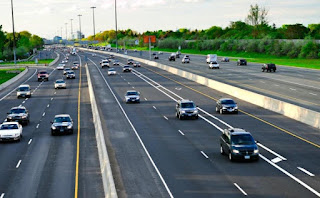Introduction In the world of internal combustion engines, turbochargers have become a popular method of increasing power and efficiency. This gas compressor, often referred to simply as a turbo, is a form of forced induction that forces air into the engine, resulting in more power for a given displacement. In this blog, we will explore the inner workings of turbochargers and their impact on engine performance. The Components of a Turbocharger At its most basic level, a turbocharger consists of three major components: the turbine, the compressor, and the bearing system that supports the turbine shaft connecting the turbine and compressor wheels. The turbine is located on the hot side of the turbocharger and is bolted onto the engine's exhaust manifold. As the engine runs, the exhaust gases pass through the turbine, spinning a fan called the turbine wheel. This spinning motion converts heat and pressure into rotational force, which in turn spins the compressor whee...
- Fasten your seatbelt! The passengers inside a moving vehicle are traveling the same speed as the speedometer indicates. When a vehicle hits to a solid object the people inside vehicle keep moving until something stops them. If you are not wearing your seatbelt, you will be either thrown out of the vehicle, or the steering wheel, windshield, dashboard, other objects or another person might be what stops you. This "human collision" often causes serious injury.
- Everyone
is responsible for avoiding collisions. Even if somebody else does
something wrong, you'll be found liable for a collision if you'll have
done something to avoid it.
- Be courteous while driving. It means giving other drivers space to change lanes, not cutting them off and signaling your turns lane changes properly.
- Drive
defensively. It means being able to see dangerous situations before they
happen and to respond quickly and effectively to prevent them.
- Turn
on headlights one-half hour before the sunset and keep them on until
one-half hour after the sunrise. Don't drive with only one headlight or
with lights that not aimed properly.
- Use
signals to inform other drivers what you would like to try to give the
right signal well before the action and confirm other drivers can see it.
- Keep
to the proper of the road unless you would like to show left or pass
another vehicle. Get into the habit of driving within the left lane,
leaving the opposite lanes clear for passing. Right lane is the passing
lane in all multi lane roads.
- Obey
speed limits. Where there are no posted speed limits, the maximum speed in
50 km/h in cities, towns, villages and built-up areas.
- At
an intersection without stop signs or lights, you must yield the
right-of-way to any vehicle approaching from the right. At an intersection
with stop signs at all corners, if two vehicles stop at the same time, the
vehicle on the left must yield to the vehicle on the right.
- Stop
for school buses. No matter what direction you are traveling in, you must
stop whenever you approach a stopped school bus with its upper alternating
red lights flashing, unless you are on a road with a median. (A median is
a raised, lowered or earth strip dividing a road where vehicles travel in
both directions.) You must obey the school bus law on any road, no matter
what percentage lanes or what the regulation. Be prepared to prevent for a
faculty bus at any time, not just within school hours. If you don't stop
for a school bus, you can be fined $200 to $1,000 and get six demerit
points for a first offence.
- Shoulder
check while parking. If you are reversing straight back or to any
direction, turn you body and head to the direction and look back over your
shoulder. If you would like to get rid of your safety belt to show your
body to ascertain properly when reversing, do so. But don't forget to
buckle up again before moving forward.
- Upon
entering a freeway, always use the acceleration lane to raise the speed to
the common speed of traffic on the freeway before merging with traffic. Be
careful not to cut off any vehicle when joining the flow of traffic. It is
dangerous and illegal for a slower moving vehicle to chop ahead of a faster
moving vehicle.
- If
you want to use a telephone when driving, use a hands-free microphone.
Make it a habit to use your cellular phone only when you are parked, or
have a passenger use the phone.














Comments
Post a Comment
If you have any doubts and queries please let me know